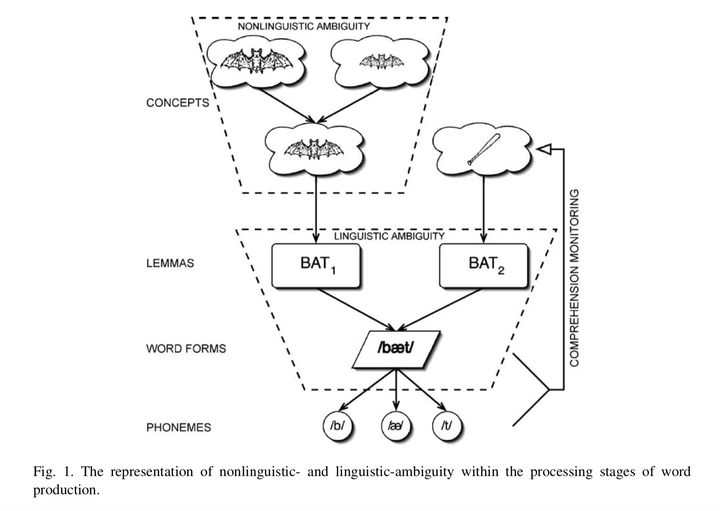
Abstract
Three experiments assessed how speakers avoid linguistically and nonlinguistically ambiguous expressions. Speakers described target objects (a flying mammal, bat) in contexts including foil objects that caused linguistic (a baseball bat) and nonlinguistic (a larger flying mammal) ambiguity. Speakers sometimes avoided linguistic-ambiguity, and they did so equally regardless of whether they also were about to describe foils. This suggests that comprehension processes can sometimes detect linguistic-ambiguity before producing it. However, once produced, speakers consistently avoided using the same linguistically ambiguous expression again for a different meaning. This suggests that production processes can successfully detect linguistic-ambiguity after-the-fact. Speakers almost always avoided nonlinguistic-ambiguity. Thus, production processes are especially sensitive to nonlinguistic- but not linguistic-ambiguity, with the latter avoided consistently only once it is already articulated.